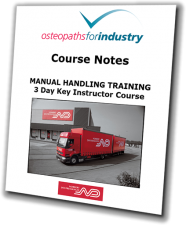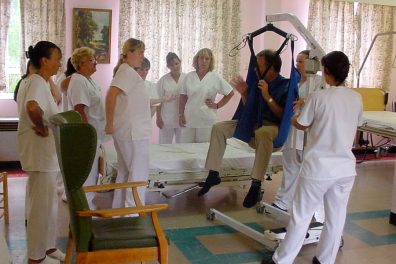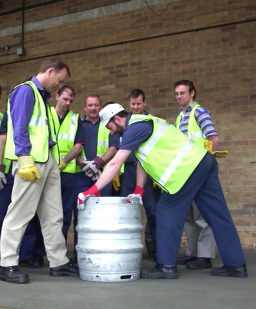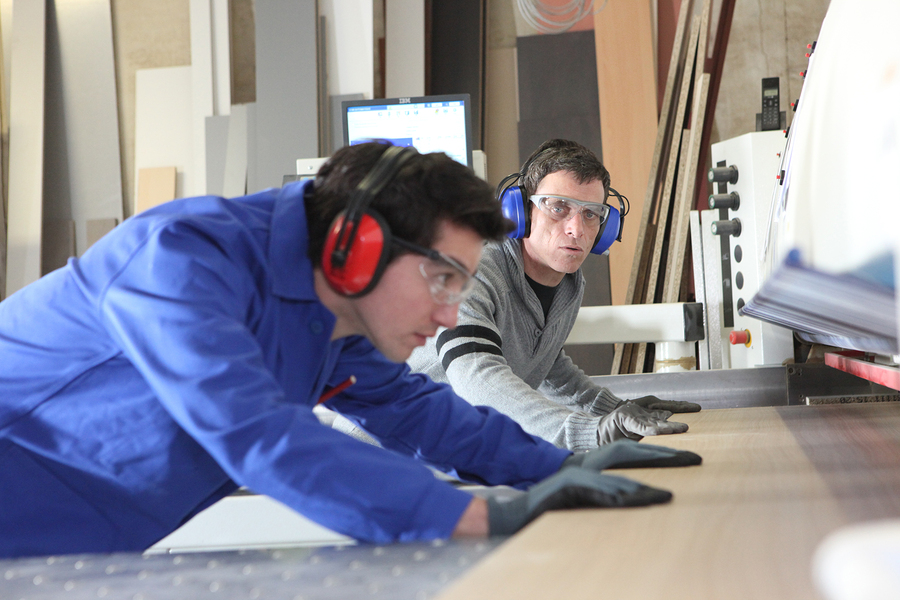Hands-on practical skills training is an absolute must. Too much spoken information can lead to a lower rate of learning retention.
This is why our team of instructors, each a fully qualified osteopath or physiotherapist, use mixed training methods in their sessions, striking the right balance between verbal and physical instruction.
 We develop our spoken presentations and information packs using the latest government data, academic research and workplace studies to ensure participants in our training get the most accurate and up-to-date guidance available. However, we also heed the possibility of information overload and the negative effect it can have on the training session as a whole.
We develop our spoken presentations and information packs using the latest government data, academic research and workplace studies to ensure participants in our training get the most accurate and up-to-date guidance available. However, we also heed the possibility of information overload and the negative effect it can have on the training session as a whole.
Hands-on practical skills training is vitally important. There are simply thousands of professions in all walks of life that require a high-level degree of hands-on experience training, where theoretical knowledge alone would be downright dangerous! Think of a surgeon without hands on training? Or – a common activity for many of us – driving a car? Manual handling practical skills also require a level of competence, and time for practical skills should always be a key focus of any manual handling training session.

In our experience, the more time the delegates spend practising manual handling techniques in the training session, the more they will sharpen their skills giving them the competence and confidence to use and retain these skills both inside and outside of work.
 In additional, a practical session is often a welcome break from the spoken and PowerPoint elements of many training sessions. OFI courses often feature practical role-playing scenarios and best practice exercises to keep the bodies and minds of our participants active and focused on the lessons and techniques being shared. After all, we know a thing or two about the negative aspects of remaining seated too long. It applies to musculoskeletal health and learning engagement!
In additional, a practical session is often a welcome break from the spoken and PowerPoint elements of many training sessions. OFI courses often feature practical role-playing scenarios and best practice exercises to keep the bodies and minds of our participants active and focused on the lessons and techniques being shared. After all, we know a thing or two about the negative aspects of remaining seated too long. It applies to musculoskeletal health and learning engagement!
Using multiple types of media, medical props and a range of exercises in which all trainees are asked to participate; OFI instructors demonstrate the strong benefits of applying the latest learning and proper techniques within the daily work activity of each of every employee within your company.

Make practical an important part of your training
We demonstrate the stress and damage caused to muscle and tissue through poor manual handling technique via stimulating verbal lessons, PowerPoint presentations and musculoskeletal model manipulation that enables training participants to understand the negative outcomes of bad practice without experiencing them!
After teaching participants what not to do, it is essential that you not only teach participants what to do, but that you compel them to put the best practice into action. This enables training participants to understand and experience the positive outcomes of good practice, which is the goal of each and every OFI training session.
Our instructors like to close a training session with the belief that not only will the participants apply the lessons learned and best practice demonstrated and experienced in action within the workplace, they will also be in the perfect position, equipped with the necessary knowledge and skills, to become tutors to new employees.
People in Health & Safety roles should always remember that your workforce will best remain safe, healthy and productive if they not only take it upon themselves to use correct procedures, but also ensure their colleagues do the same by offering corrective advice when needed and leading a good example.
In this blog series, our expert trainers share their experience and show you how to make your manual handling courses more engaging.
[xyz-ihs snippet=”Newsletter-Subscribe-Medium”]Articles within this series will be published bi-monthly from January 2015. Subscribe to our email newsletter to stay informed.
- Introduction (Advice for Manual Handling trainers – How to make your courses more engaging).
- Tailor your course to fit your audience.
- Apply the ‘Stages of Change’ model to your training.
- Make your course material engaging & mix up your training methods.
- Personalise your training with anecdotes and case studies.
- Explain the ‘why’ behind the ‘how’.
- Make ‘practical’ a key component of your training. (this page)
- Follow up your training with feedback and course evaluation.








